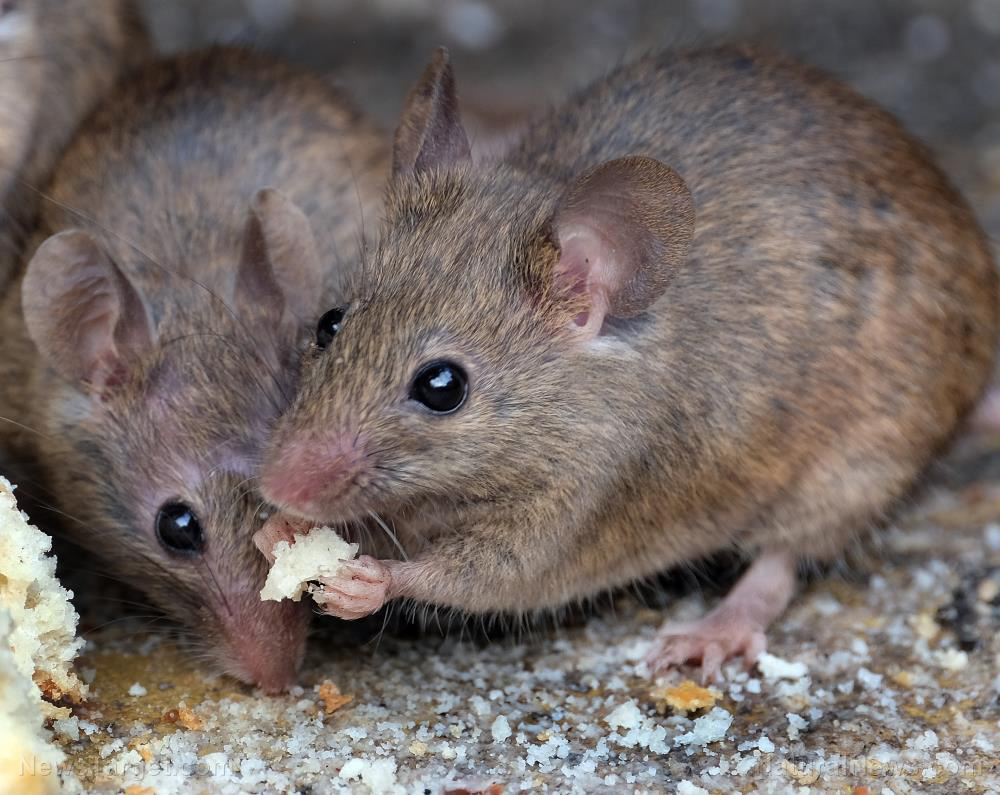
Advertisement
If SHTF comes, would you be able to eat mice and rats?
The idea of eating mice and rats is so disgusting for most people that anyone who brings up the topic will be shushed. Just saying the words “mouse” and especially “rat” is enough to make most listeners cringe. And yet these may be the only animal protein available to you if you happen to be in an urban area when SHTF. Rats and mice are very hardy animals and, together with cockroaches, will likely be the last animals left after a WMD attack. So toughen up your palates and be prepared to eat rodent meat! (h/t to PracticalSelfReliance.com.)
Rat dishes from around the world
Eating rats is not strange to many people around the world. Rodents have been eaten since ancient times, and an old HBO show called Rome featured some characters chomping on dormice while lounging on couches. Dormice resemble and behave like squirrels. Ancient Romans raised them and fattened them up in specialized enclosed terracotta pots called glirarium. At least two recipes from Roman times survive to this day: roasted dormouse coated in honey and poppyseed, and dormouse stuffed with minced pork, pepper, nuts, fennel, and broth.
Until dormice became a threatened species, Calabrians in southern Italy considered them a specialty. Slovenians still eat them, though: barbecued or stewed with marjoram and vinegar. Across the Alps, when Switzerland was overrun by an infestation of voles, a cousin of the mouse, an enterprising farmer turned them into pate.
Larousse Gastronomique, the culinary encyclopedia of France, lists a recipe for grilled rats Bordeaux style. Here, drunken rats hiding in wine cellars are skinned and eviscerated, brushed with a thick coat of olive oil and crushed shallots, and grilled over a fire of broken wine barrels.

In the marshes and canals of Flanders in western Belgium, stewed muskrats were served in specialty restaurants under the name “water rabbits.” They are hard to find now, though.
The Vietnamese prepare rats in two ways: Chuot roti is rat covered in a thick sauce made from garlic and five-spice powder. Chuot quay is rat roasted on a skewer. Meanwhile, the Thais barbecue and sell them at sidewalk stalls.
In a remote village in the hills of northeast India, the BBC describes a festival where the main dish is rat. One of the favorite dishes of the Adi tribe during that festival is a stew made with the rat’s stomach, intestines, liver, testes, fetuses, all boiled together with tails and legs plus some salt, chili and ginger.
Rat and mouse meat are commonly sold in markets in West Africa. The United Nations Food and Agricultural Organization reports that rodent meat now comprises 50 percent of the locally produced meat eaten in some parts of Ghana. People there have a recipe for stewed cane rat. They fry the meat in a mixture of butter and peanut oil. Then they add water, tomatoes or tomato purée, hot red peppers, and salt. They simmer the rat until it’s tender. Finally, they serve it with rice.
Mexicans have a recipe for field mice called raton de campo asado. The mice are simply skinned and gutted, then roasted over hot coals or an open fire.
Americans are no strangers to eating rats
People in Louisiana have taken to eating swamp rats. These 20-pound rodents were introduced to the state from Argentina in the 1930s for their fur. They have increased significantly to the point that they are damaging Louisiana’s swampland. The state’s Department of Wildlife and Fisheries has encouraged Louisianans to eat the swamp rats to help protect the environment. Some restaurants have started serving the meat, but it remains to be seen if mainstream Americans will take to eating rat meat.
Sources include:
Submit a correction >>
This article may contain statements that reflect the opinion of the author
Advertisement
Advertisements
















